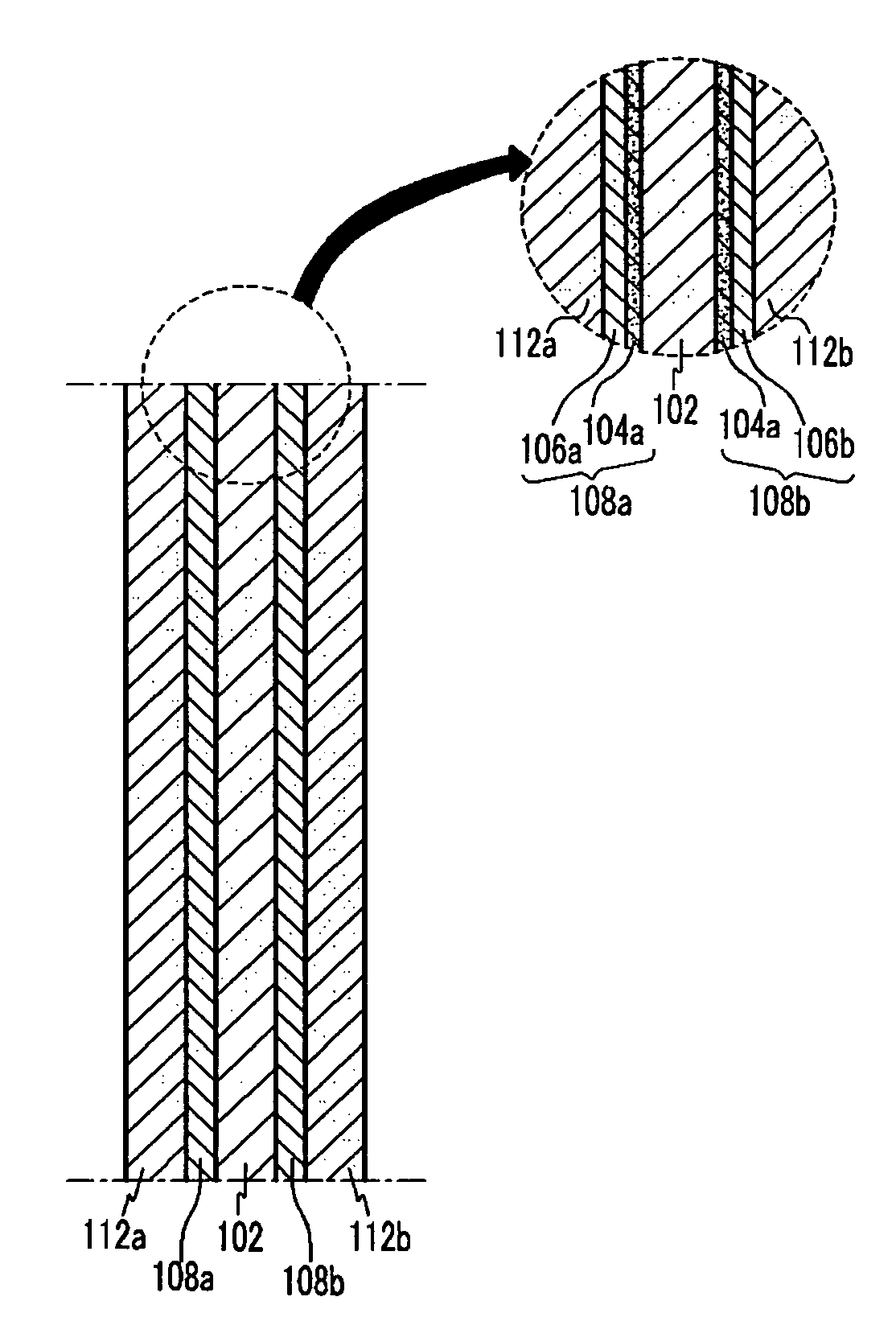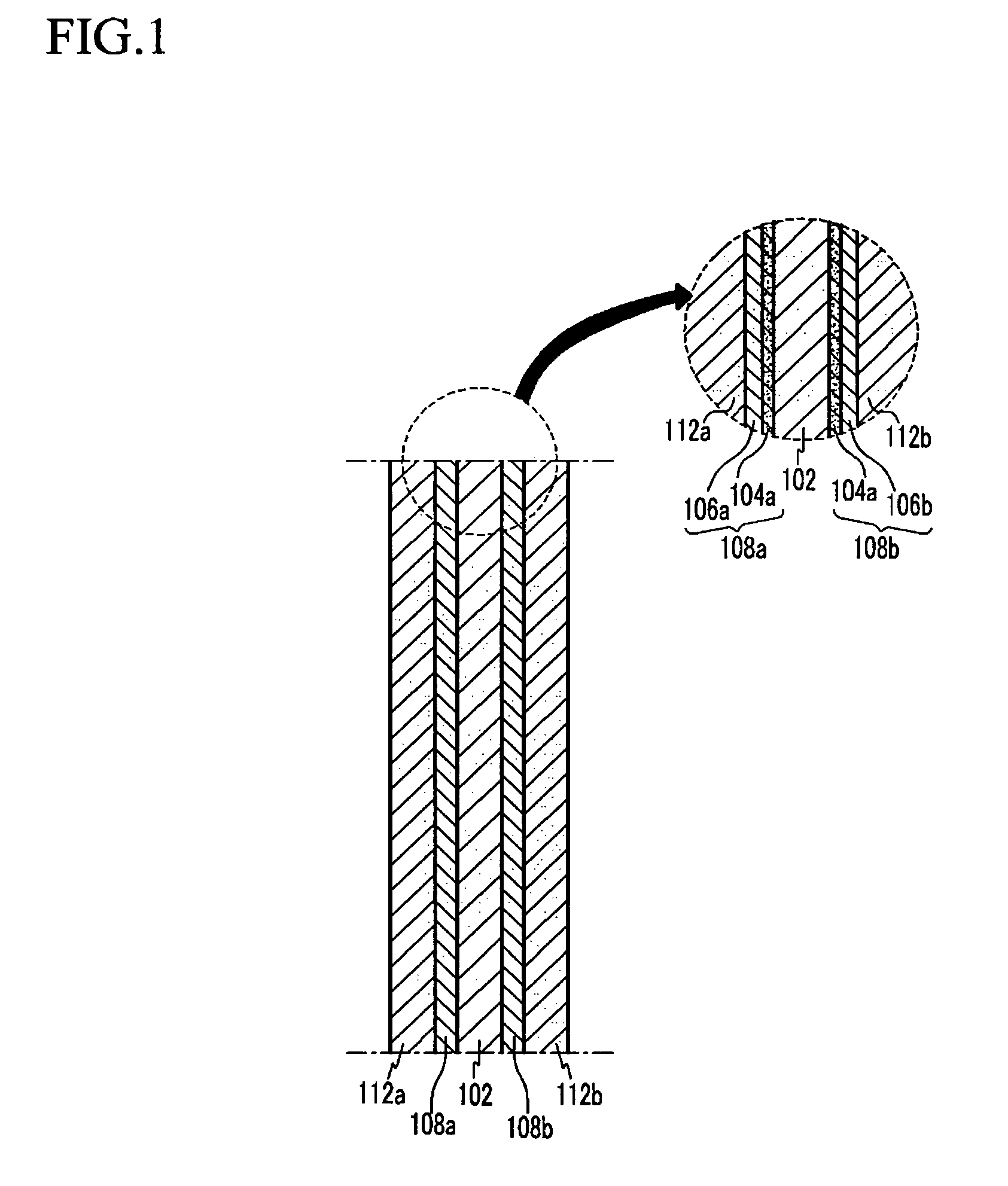Electrode for a fuel cell, and a membrane-electrode assembly and fuel cell system comprising the same
a fuel cell and membrane-electrode technology, which is applied in the direction of cell components, cell component details, electrochemical generators, etc., can solve the problems of reducing the output voltage of the fuel cell, unable to endure the pressure added, and material breakage easily, so as to achieve easy hygroscopic regulation and improve the ability
- Summary
- Abstract
- Description
- Claims
- Application Information
AI Technical Summary
Benefits of technology
Problems solved by technology
Method used
Image
Examples
example 1
[0052]A slurry was prepared by mixing 20 parts by weight of Pt / C powder (Pt content of 20 wt %) and 13.4 parts by weights of Nafion™ in 66.6 parts by weight of a solvent mix of water and isopropyl alcohol (with a volume ratio of 4:1), treating the mixture with ultrasound for 30 minutes, and stirring it for 3 hours with a magnetic agitator.
[0053]The above slurry was coated on an electrode substrate composed of nano-carbon fiber with a pore diameter of 100 nm and dried to fabricate an anode and a cathode with a 60 μm-thick catalyst layer.
[0054]The above anode and cathode were stacked on both sides of Nafion112™ films and hot-pressed therewith together at a temperature of 120° C. for 3 minutes to fabricate a membrane-electrode assembly. Then, a unit cell was fabricated by connecting separators on both sides of the membrane-electrode assembly.
example 2
[0055]Another unit cell was fabricated by the same procedure as Example 1 except for using platinum to form a 30 μm-thick catalyst layer by a sputtering method.
experimental example 1
[0058]Humidified hydrogen and air were injected into the unit cells fabricated in the above Examples and Comparative Examples at a temperature of 70° C. and at a normal pressure and the voltages were measured. The results are given in the following Table 1.
[0059]
TABLE 1Voltage (V)CurrentComparativeComparativeDensity (A / cm2)Example 1Example 2Example 1Example 200.940.930.920.910.20.910.870.830.820.60.680.620.530.510.80.530.510.470.4210.470.440.360.31
[0060]As shown in the above Table 1, outputs of the unit cells fabricated according to Examples 1 and 2 of the present invention proved to be much better than those of Comparative Examples 1 and 2 fabricated by using conventional carbon cloth.
[0061]The above fuel cell has a higher efficiency in that it has excellent gas and water permeability, outstanding electron conductivity, and a low defect rate of products because it can endure the hot-rolling process due to an electrode substrate comprising nano-carbon fiber.
PUM
| Property | Measurement | Unit |
|---|---|---|
| pore size | aaaaa | aaaaa |
| diameter | aaaaa | aaaaa |
| thickness | aaaaa | aaaaa |
Abstract
Description
Claims
Application Information
 Login to View More
Login to View More - R&D
- Intellectual Property
- Life Sciences
- Materials
- Tech Scout
- Unparalleled Data Quality
- Higher Quality Content
- 60% Fewer Hallucinations
Browse by: Latest US Patents, China's latest patents, Technical Efficacy Thesaurus, Application Domain, Technology Topic, Popular Technical Reports.
© 2025 PatSnap. All rights reserved.Legal|Privacy policy|Modern Slavery Act Transparency Statement|Sitemap|About US| Contact US: help@patsnap.com


